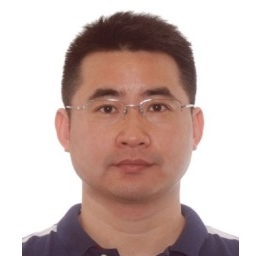Precision Optical Manufacturing and Processing
A special issue of Micromachines (ISSN 2072-666X). This special issue belongs to the section "D:Materials and Processing".
Deadline for manuscript submissions: closed (30 July 2025) | Viewed by 22358
Special Issue Editors
Interests: ultra-precision machining technology; intelligent manufacturing and industrial robotics; abrasive machining technology; innovative hybrid manufacturing processes for difficult-to-machine materials; materials science/workpiece surface integrity analysis; modelling, simulation, and optimization of manufacturing processes
Special Issues, Collections and Topics in MDPI journals
Interests: manufacturing process mechanics; 3D printing; ultra-precision manufacturing and metrology; freeform measurement and characterization; manufacturing process optimization; fring projection; 3D vision; VR/AR/MR; light field; machine learning
Special Issues, Collections and Topics in MDPI journals
Interests: precision and ultra-precision machining technology; ultra-precision single point diamond cutting technology and machine tools; advanced optical manufacturing; machining process and on-line measurement; processing of difficult-to-machine materials
Special Issue Information
Dear Colleagues,
Precision optical elements have always been essential to strategic fields such as aerospace, defense, medical equipment, and electronics. In recent years, the development of those fields has created new requirements for optical manufacturing technology, which mainly focus on higher precision, efficiency, complexity, and intelligence. Therefore, developing new advanced micro/nanoscale machining technologies, state-of-the-art processing techniques, and corresponding equipment and establishing theoretical systems for better understanding and application of the process are of great significance. Accordingly, this Special Issue seeks to showcase research papers, short communications, and review articles that focus on, but are not limited to, the recent advances and frontiers of the following areas:
- Precision engineering, inspection, measurement, and metrology;
- Manufacturing planning, optimization, and simulation;
- Computer-integrated manufacturing systems;
- Smart manufacturing;
- Micro/nanofabrication and manufacturing;
- Ultraprecision machining technology.
We look forward to receiving your contributions.
Dr. Zhongchen Cao
Prof. Dr. Lingbao Kong
Dr. Dongxu Wu
Guest Editor
Manuscript Submission Information
Manuscripts should be submitted online at www.mdpi.com by registering and logging in to this website. Once you are registered, click here to go to the submission form. Manuscripts can be submitted until the deadline. All submissions that pass pre-check are peer-reviewed. Accepted papers will be published continuously in the journal (as soon as accepted) and will be listed together on the special issue website. Research articles, review articles as well as short communications are invited. For planned papers, a title and short abstract (about 250 words) can be sent to the Editorial Office for assessment.
Submitted manuscripts should not have been published previously, nor be under consideration for publication elsewhere (except conference proceedings papers). All manuscripts are thoroughly refereed through a single-blind peer-review process. A guide for authors and other relevant information for submission of manuscripts is available on the Instructions for Authors page. Micromachines is an international peer-reviewed open access monthly journal published by MDPI.
Please visit the Instructions for Authors page before submitting a manuscript. The Article Processing Charge (APC) for publication in this open access journal is 2100 CHF (Swiss Francs). Submitted papers should be well formatted and use good English. Authors may use MDPI's English editing service prior to publication or during author revisions.
Keywords
- optical manufacturing
- precision processing
- process chains
- micro- and nanometrology
- modelling and simulation
Benefits of Publishing in a Special Issue
- Ease of navigation: Grouping papers by topic helps scholars navigate broad scope journals more efficiently.
- Greater discoverability: Special Issues support the reach and impact of scientific research. Articles in Special Issues are more discoverable and cited more frequently.
- Expansion of research network: Special Issues facilitate connections among authors, fostering scientific collaborations.
- External promotion: Articles in Special Issues are often promoted through the journal's social media, increasing their visibility.
- Reprint: MDPI Books provides the opportunity to republish successful Special Issues in book format, both online and in print.
Further information on MDPI's Special Issue policies can be found here.








